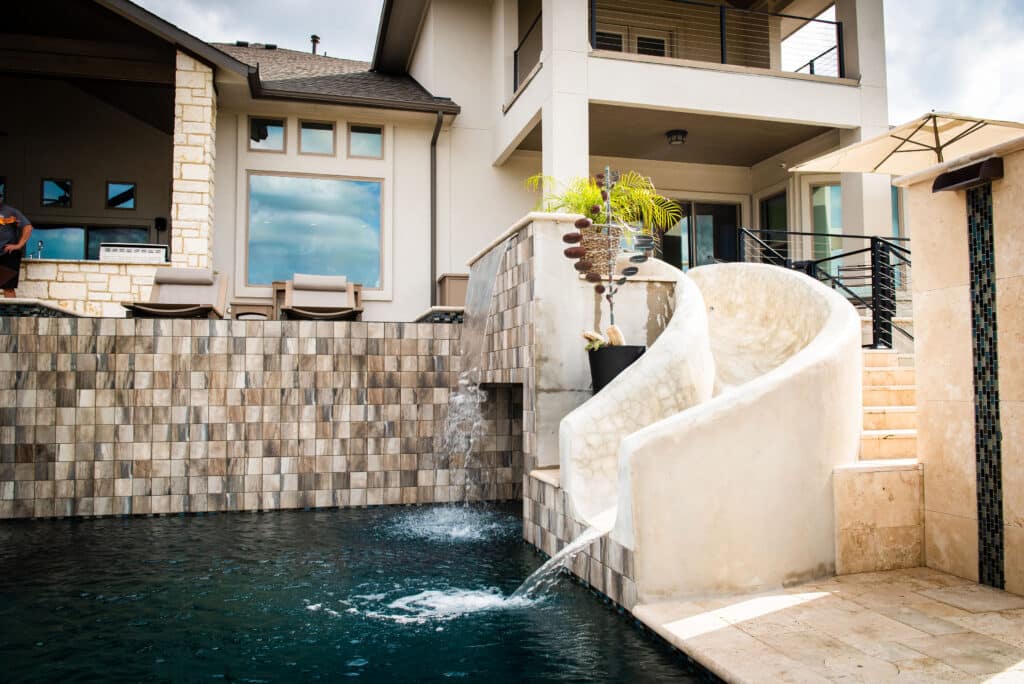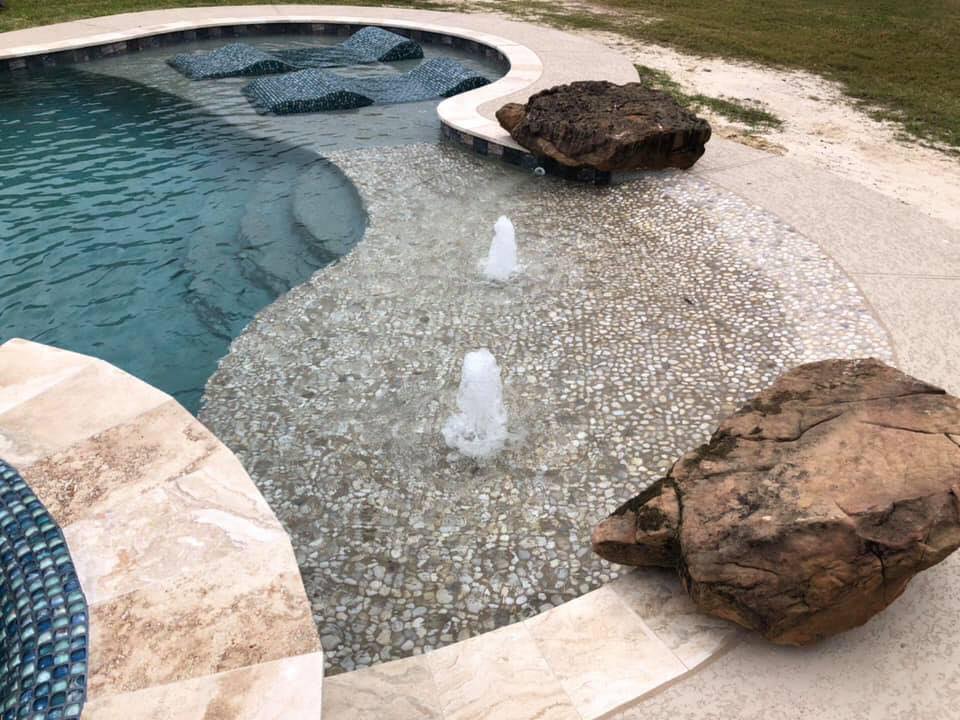What Is A Pool Diving Board?
A diving board is a board that is used for diving. It is usually attached to a swimming pool. A diving board allows the diver to enter the water with more speed and height than if they were to simply jump in from the side of the pool.
There are many different types of diving boards, ranging from simple springboards to more complex platforms. The most common type of diving board is the springboard. Springboards are made of a board that is attached to a spring. The diver stands on the end of the board, and as they jump, the springboard pushes them into the air.
Platforms are another type of diving board. Platforms are similar to springboards, but instead of being made of a board and spring, they are made of two boards. The diver stands on one board, which is connected to another board. As the diver jumps, the second board pushes them into the air.
Diving boards can be made from different materials, including wood, fiberglass, and carbon fiber. Wood diving boards are the heaviest and least expensive option. Fiberglass diving boards are lighter than wood boards and more expensive. Carbon fiber diving boards are the lightest and most expensive option.
Are Diving Boards Illegal?
Diving boards are a common fixture at many public swimming pools. They can be great fun for people of all ages, but they also come with a certain amount of risk. Because of this, some states have laws that prohibit the use of diving boards at public pools.
There are a few different reasons why diving boards might be illegal in some states. One is that they can be dangerous, especially if people do not follow the proper safety procedures. Diving boards can also be a liability for pool owners, since people can get injured while using them.
If you’re planning on visiting a public pool in a state where diving boards are illegal, you’ll need to find another way to get your adrenaline fix. There are plenty of other activities that can provide a similar sense of excitement without the same level of risk.
How High Is The Olympic Diving Board
The Olympic diving board is one of the most iconic features of the Summer Olympics. It is also one of the tallest structures in Olympic Park, at a towering height of 10 meters. This high diving board is used by athletes from all over the world who come to compete in the Olympic Games.
Despite its impressive height, the Olympic diving board is actually not the highest in the world. That record belongs to the “Big Red” diving platform at the University of Texas at Austin, which stands at a whopping 27 meters.
So why is the Olympic diving board not as high as it could be? There are a few reasons. For one, safety is a major concern when it comes to such a tall structure. The higher the diving board, the greater the risk of injury for athletes. This is why most professional divers prefer pools that are no more than 3 meters deep – any deeper and the risk of serious injury becomes too great.
The other reason has to do with physics. The taller the diving board, the faster athletes will be moving when they hit the water. This can cause problems with turbulence and make it difficult for divers to control their descent. For these reasons, 10 meters is really the perfect height for an Olympic diving board.
What Are Diving Boards Made Of?
Diving boards are mostly made of fiberglass these days, but they can also be made of wood or metal. The important thing is that they be non-slip and have some give to them so that divers can land safely.
Fiberglass diving boards are made by layering sheets of fiberglass and resins to create a strong, yet flexible board. The fiberglass is then covered with a non-slip material. Wood diving boards are usually made from maple or another hardwood and then coated with a non-slip finish. Metal diving boards are less common, but can be made from aluminum or steel. Again, the important thing is that the surface is non-slip.
Diving boards are an important part of many pools and waterparks, and there are a variety of materials that can be used to make them. The most important thing is that they are safe and have a non-slip surface.
How Much Does A Diving Board Cost?
Diving boards are a common feature at many public pools, and they can be a lot of fun for people of all ages. But how much does a diving board cost?
The price of a diving board can vary depending on a few factors, such as the type of board, the material it’s made from, and the brand. For example, a simple plastic diving board may cost as little as $100, while a more high-end board made from fiberglass or carbon fiber could cost $1,000 or more.
In general, however, you can expect to pay anywhere from $200 to $600 for a good quality diving board. And remember, if you’re installing a diving board at home, you’ll also need to factor in the cost of installation.
Where Did Diving Boards Come From?
Diving boards have been a staple of swimming pools for generations, but where did they come from? The origins of diving boards are a bit murky, but we do know that they date back at least to the early 20th century.
There are several theories about the invention of diving boards. One popular story is that they were invented by George Nissen, who is better known as the inventor of the trampoline. Nissen was an accomplished diver in his youth and is said to have designed the first diving board in 1931 to improve his performance.
Another theory credits German engineer Karl Beaurle with inventing the diving board in 1907. Beaurle was reportedly looking for a way to allow swimmers to dive into pools from a higher position and is said to have come up with the idea of a springboard that could be attached to a pool deck.
Whatever the true story may be, it’s clear that diving boards have been around for quite some time. And while their popularity has waxed and waned over the years, they remain a common sight at pools across the world.





